Fix Memory Management Blue Screen On Startup
The MEMORY_MANAGEMENT stop code, often displayed with 0x0000001A is a Blue Screen of Death (BSoD) error in Windows that usually means there’s a problem with your computer’s memory or RAM.
I first encountered this error during startup, which was worrying because it prevented me from using the system altogether.
However, after some troubleshooting steps, I was soon able to get things running again.
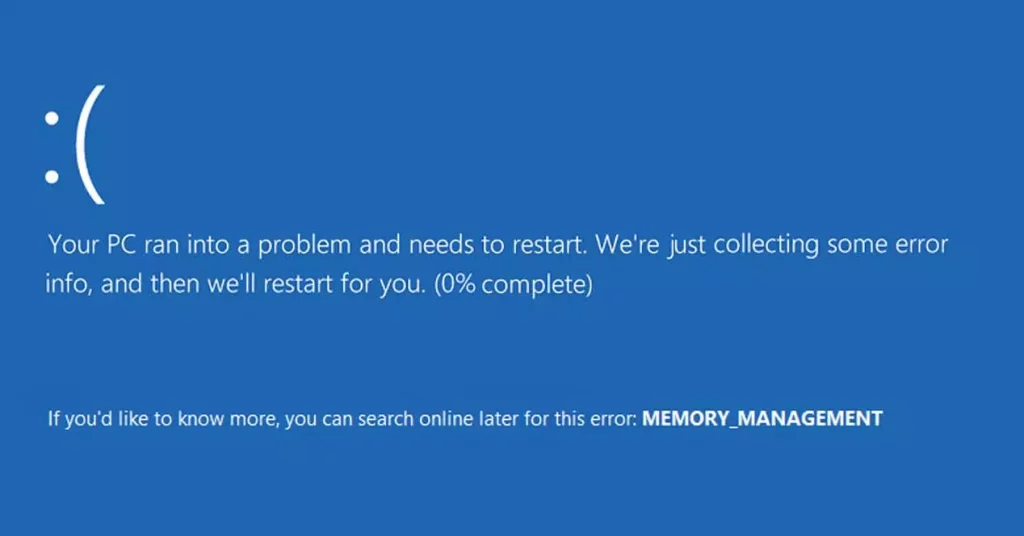
The cause of the MEMORY_MANAGEMENT on startup issue will be different for everyone, so below, I have compiled the most common causes and useful fixes so everyone can recover their system.
Why does the Memory Management blue screen happen on startup?
A BSoD can occur at any time, and there are countless causes. While memory refers to RAM or how Windows processes memory tasks, a crash on startup is a bit more serious, especially if it causes a restart loop. Here’s why it can happen:
Loose or Faulty RAM – If one of your RAM modules is damaged or becomes loose from its slot, this can prevent Windows from starting correctly because it cannot properly utilize the memory even though the system thinks it should be there.
Incompatible RAM – Similarly, RAM that is incompatible with your motherboard or operating system or has vastly different specs from your other RAM modules can cause a BSoD on startup.
Overclocking – If your RAM is overclocked beyond its stable limits, it can cause memory-related errors, especially during system startup when RAM usage is high.
Other Hardware Issues – Problems with your hard drive or storage devices can cause memory errors when loading the operating system. Likewise, a faulty graphics card can be linked to memory errors because it has its own memory chip.
Driver Issues – Outdated, incompatible, or corrupt device drivers can lead to memory-related errors. During startup, drivers are loaded into memory, and if there are issues, it can result in the MEMORY_MANAGEMENT error.
Memory Leaks – Some background processes or startup applications may have memory leaks, gradually consuming system RAM and leading to memory management problems. The culprit is usually poorly coded software or corruption within Windows.
Malware – Computer infections can target all system areas, including RAM and memory.
Incorrect BIOS/UEFI Settings – Incorrect motherboard settings or outdated firmware can lead to BSoDs, especially if you have upgraded to a modern RAM module.
Virtual Memory Settings – Issues with the page file settings, such as an incorrectly configured page file, can lead to memory errors during startup.
System File Corruption – Corrupted system files related to memory management can result in the MEMORY_MANAGEMENT error during startup.
How to fix a Memory Management BSoD on startup
There are several methods for fixing this type of BSoD. If the error occurs immediately on startup and you cannot access any programs or software, you will need to apply some fixes from Windows Advanced Boot Options.
1. Enter Advanced Boot Options
As your computer starts up, you need to interrupt the normal boot process before Windows loads. The method to do this may vary depending on your computer’s manufacturer and the version of Windows you’re using. For Windows 10 and above, keep pressing F8 until you enter the recovery area.
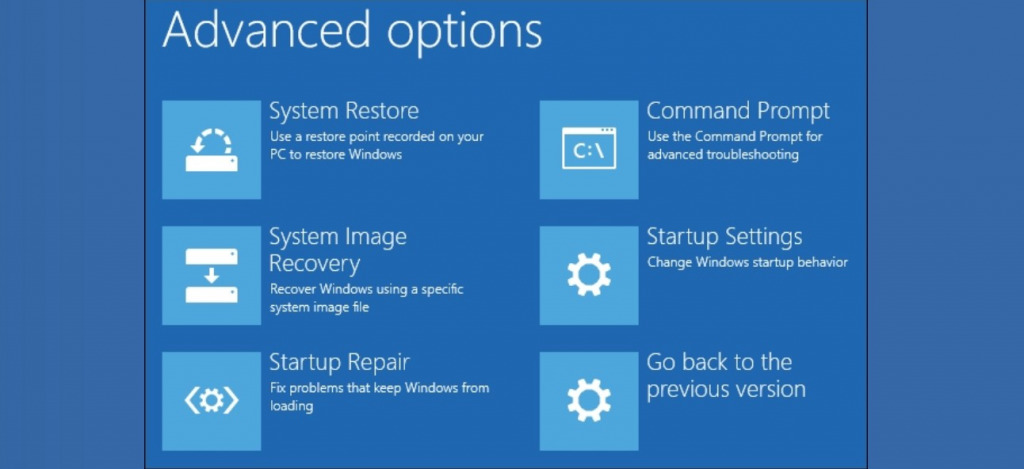
Startup Repair – This tool automatically scans and fixes any Windows corruption related to startup, which is a good first step when encountering startup blue screens.
System Restore – If the error only just started happening and you don’t think it’s hardware related, choosing a restore point from before the error occurred can revert all Windows settings and changes that may have caused it.
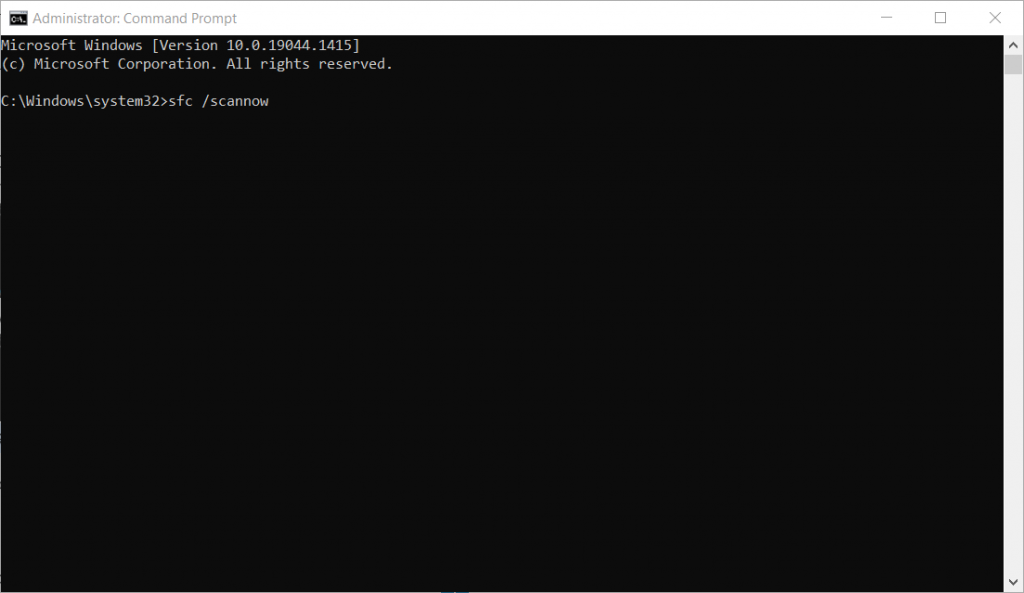
Command Prompt – This requires you to enter a command string to perform a system file scan. Simply type sfc /scannow followed by the Enter key.
It aims to replace any corrupted or missing core Windows system files with fresh versions.
2. Check RAM is seated
With the power off, open your PC and check if all the RAM sticks are fully engaged and clipped into place. It’s also worth checking if all the other components are seated correctly.
Secondly, make sure there is proper ventilation, no dust buildup, and your fans are spinning to prevent overheating.
3. Check RAM compatibility
If you recently installed a new RAM stick, it must be compatible with your motherboard. It will either be DDR4 or DDR5, though older setups may still only support DDR3. The new RAM should be the same type and, ideally, the same brand and speed as your other RAM.
You must also check that the extra stick does not exceed the maximum capacity permitted by Windows and your motherboard.
4. Update BIOS/UEFI
Just like hardware device drivers, your motherboard’s BIOS/UEFI firmware occasionally needs updating. Some updates can solve memory problems, especially if you recently upgraded RAM. If you cannot access Windows, you will need to use a second PC or device to browse the manufacturer’s website and download the updated files to a USB storage drive.
1. Download the latest BIOS/UEFI update for your motherboard model.
3. Restart your computer and press the specific key or key combination (e.g., F2, F12, Delete) to enter the BIOS/UEFI settings.
4. Navigate to the BIOS Update or UEFI Update area, depending on your motherboard model.
5. Follow the prompts and select the USB drive with the update.
6. Wait for the process to finish, reboot, and check if the BSoD is fixed.
5. Boot in Safe Mode
If the error persists and you still cannot get to the Windows desktop, the next step is to choose Safe Mode from Advanced Boot Options.
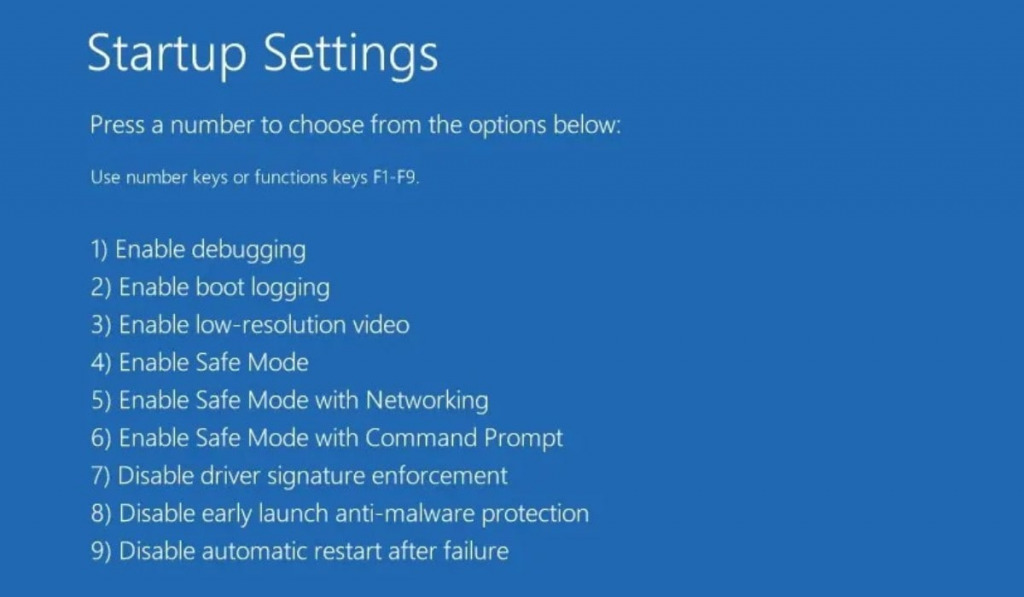
This runs a limited number of programs, and background processes, but allows you to run certain utilities and access the web.
Now is a good time to run an antivirus scan if Malware is the cause.
6. Run Windows Memory Diagnostic
The Windows Memory Diagnostic checks RAM for damage or configuration issues.
1. Press the Windows key and type Windows Memory Diagnostic.
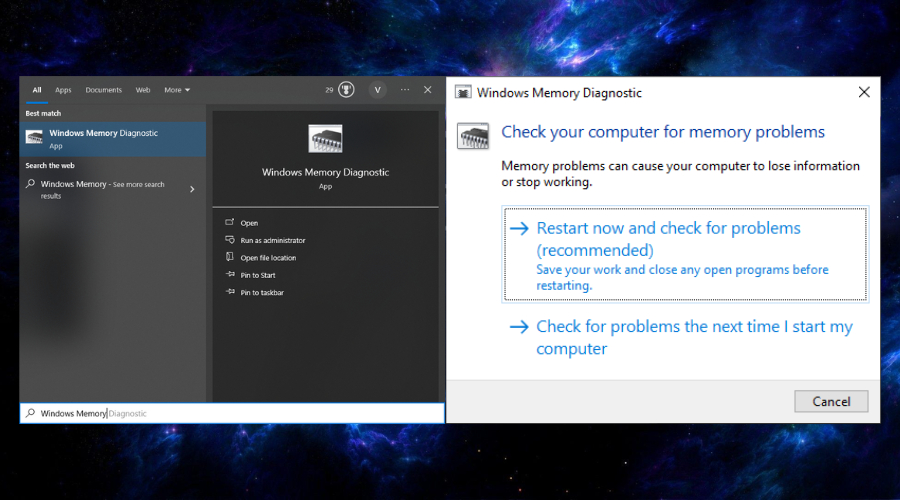
2. Click the Restart now and check for problems option.
3. Wait for the scan to complete. Your PC will restart and give a summary of results.
5. You may need to replace or repair faulty RAM modules.
7. Undo Overlocking
If you recently overlocked RAM, return to the default to see if it fixes the memory management BSoD. This also applies to any recent overclocking of your GPU or CPU.
8. Check Virtual Memory Settings
Windows uses a portion of your hard drive as if it were additional RAM, called virtual RAM. If these settings are incorrect, it can cause a BSoD. Here’s how to reset it:
1. Right-click on This PC or My Computer and select Properties.
2. Click on Advanced system settings.
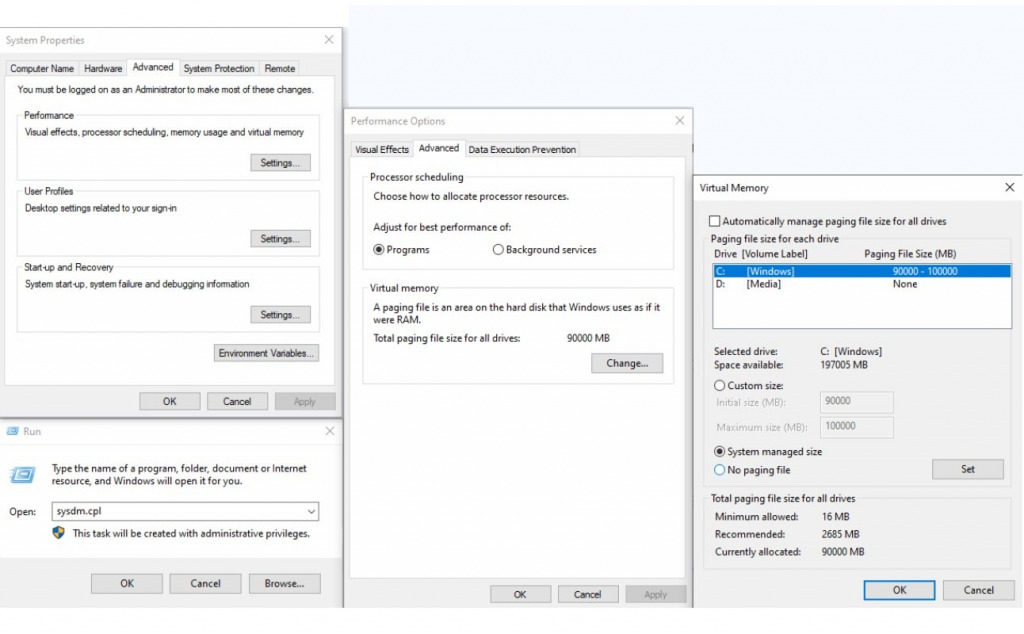
3. Under the Performance section go to the Advanced tab and click the Settings button to open the Performance Options window.
4. Go to Advanced, and under Virtual memory click the Change button to open the Virtual Memory window.
6. Check the setting to Automatically manage paging file size for all drives.
9. Use a Windows Repair Tool
A Windows repair tool such as Fortect runs in Safe Mode and goes a step beyond the built-in utilities available on Windows.
1. Download and Install Fortect on your PC.
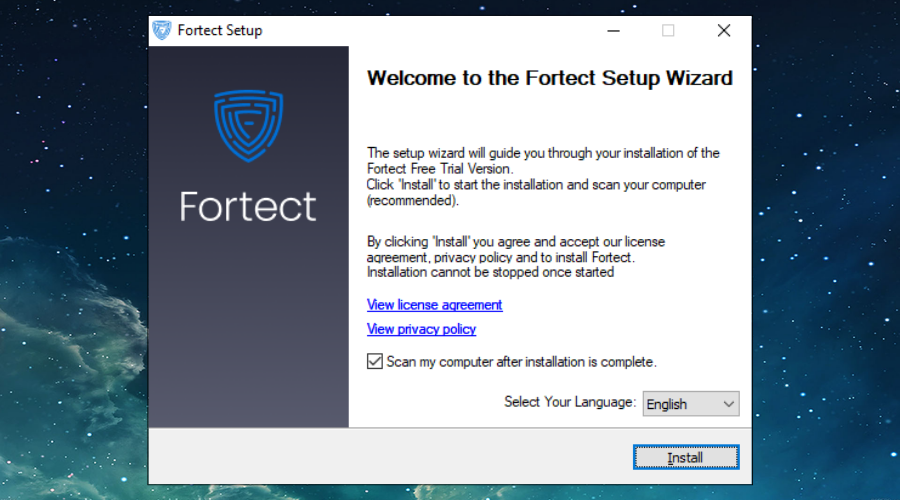
2. Launch Fortect and Start Scanning. It will perform a system-wide analysis, checking for issues in the Windows registry, missing DLLs, and other memory-related BSoD problems. It quickly identifies issues by comparing your system to its database of healthy Windows configurations.
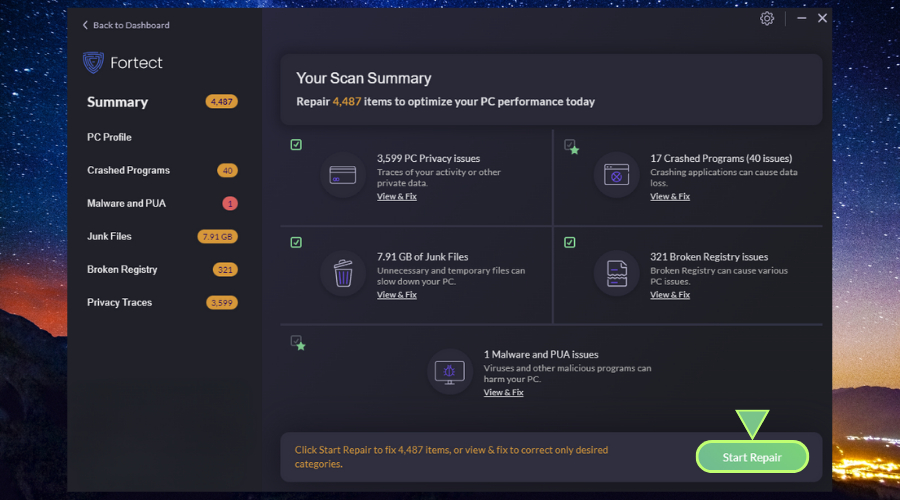
3. Click on Start Repair to replace the problematic files with working versions from Fortect’s regularly updated database.
4. Restart your PC, after the repair and scan processes are completed.
Fortect is great for MEMORY_MANGEMENT BSoDs because it shows a hardware summary. This lets you see if a memory module isn’t recognized or the system is overheating.




